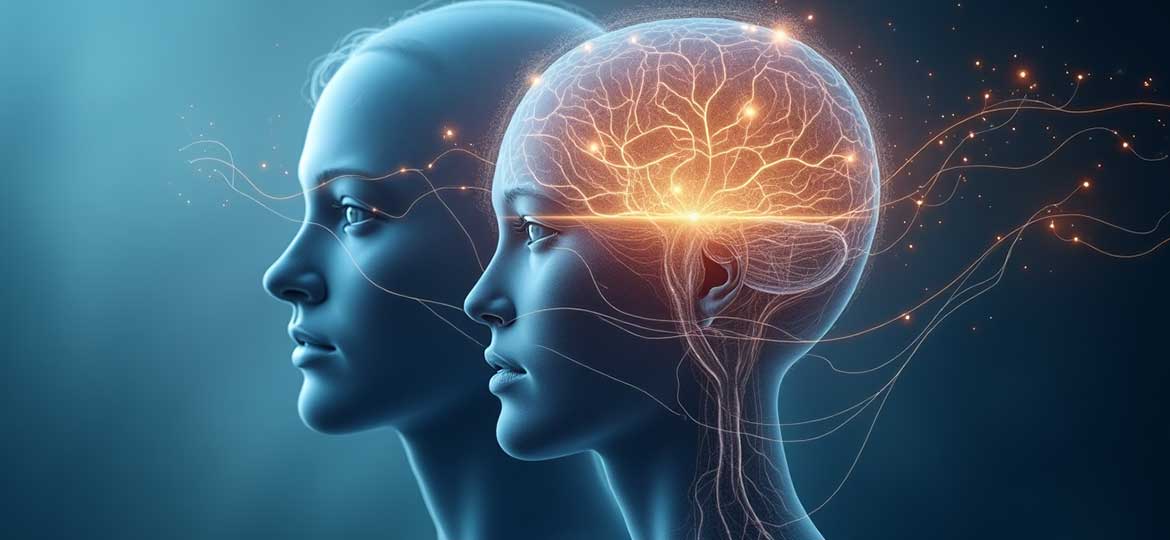*Rate Increase Notice* Starting September 1, 2025 rates for our Psychologists will be increasing to 235$ / 50min session.


Our Calgary Psychologist Clinic has therapists that are experienced in using Psychodynamic Therapy to help clients achieve their therapeutic goals. Psychodynamic therapy is a type of psychotherapy that focuses on understanding and exploring the unconscious processes and past experiences that shape an individual’s current thoughts, feelings, and behaviors. It is based on the principles of psychodynamic theory, which was developed by Sigmund Freud and expanded upon by other notable psychologists.
In psychodynamic therapy, the therapist and client work collaboratively to identify and analyze the unconscious conflicts and patterns that may be contributing to psychological distress. The therapist helps the client gain insight into their emotions, motivations, and relationships by exploring their early childhood experiences, family dynamics, and any unresolved issues that may be affecting their present-day functioning.
One of the key concepts in psychodynamic therapy is the notion of the unconscious mind. According to this theory, individuals are influenced by unconscious thoughts and desires that are often outside of their awareness. By bringing these unconscious processes into conscious awareness, psychodynamic therapy aims to help clients gain a deeper understanding of themselves and make changes in their lives.
The therapeutic relationship plays a crucial role in psychodynamic therapy. The therapist provides a safe and nonjudgmental environment for the client to freely express their thoughts, emotions, and fantasies. Through the process of transference, where the client projects feelings and attitudes onto the therapist, the therapist can gain insight into the client’s internal world and offer interpretations and insights to promote healing and growth.
Psychodynamic therapy is often a longer-term treatment, as it involves a comprehensive exploration of the client’s history and deep-seated emotional issues. The goal is to uncover underlying causes of distress and work towards resolving them, rather than focusing solely on symptom management. The therapy process can help clients develop self-awareness, improve interpersonal relationships, and develop healthier coping mechanisms.
It’s important to note that psychodynamic therapy has evolved over time, and contemporary approaches may incorporate various techniques and theories beyond Freudian concepts. While it may not be the most widely practiced form of therapy today, it continues to be valued for its emphasis on self-exploration, insight, and understanding the impact of early life experiences on current functioning.
Andrea Krygier
Registered Psychologist
English, Spanish
Preeti Rakhra
Registered Provisional Psychologist
English, Hindi
Murray Molohon
Registered Psychologist
English
Jarret Verwimp
Clinical Canadian Certified Counsellor
English, French, Spanish (basic)
Nav Gill
Registered Provisional Psychologist / Clinical Counsellor
English, Punjabi

75% of patients show better mental health even years after they complete psychodynamic therapy. These results challenge what skeptics originally thought about this therapy’s ability to work.
Psychodynamic therapy is a proven treatment method that looks at how your past and unconscious mind shape your current behavior. Recent scientific studies and brain research have verified that it works. The treatment creates lasting positive changes in both mental health and brain function. This evidence-based approach is different from traditional psychoanalysis because it uses structured techniques and measures patient outcomes.
This detailed review gets into the science behind psychodynamic therapy and shows why it works. You’ll learn about its key mechanisms and how therapists use it with different types of patients. The review also looks at new developments that have made this therapy more effective in today’s clinical practice.
Research shows psychodynamic therapy works well for mental health conditions of all types. Complete research reveals this therapy has an effect size of 0.97 for general symptom improvement [1], which suggests substantial benefits for patients.
A major meta-analysis of 1,431 patients showed remarkable results. The treatment had an effect size of 0.97 for overall symptom improvement [1]. The studies also revealed effect sizes of 0.69 for psychiatric symptoms and 0.59 for somatic conditions [1].
The therapy’s lasting improvements stand out after completion. The effect size jumped to 1.51 during follow-up assessments nine months after treatment [1]. Traditional antidepressant medications show a lower effect size of 0.31 in comparison [2].
Studies that match psychodynamic therapy against other treatments show:
Results equal to cognitive behavioral therapy (CBT) for depression [3]
Results that match established treatments for personality disorders with an effect size of 1.46 [4]
Response rates like other proven treatments for general psychiatric symptoms [3]
A complete analysis of 61 meta-analyzes covering 21 psychiatric disorders showed that psychotherapy produced better effect sizes (0.58) than pharmacotherapy (0.40) [5]. These findings support psychodynamic therapy as an evidence-based option among other proven therapeutic approaches.
Psychodynamic therapy creates lasting therapeutic effects through three main mechanisms that work together to create psychological change. These mechanisms are the foundations of successful psychodynamic treatment.
The psychodynamic model centers on how unconscious thoughts and desires shape human behavior [6]. Therapists guide patients to identify and understand their defense mechanisms – unconscious psychological strategies people use to handle anxiety and shield themselves from uncomfortable thoughts [6]. Patients can then see how their unresolved past conflicts affect their current behavior.
Our early relationships with primary caregivers shape personality development through internalized ‘internal objects’ that influence future interactions [6]. The therapeutic process looks at three key areas:
Current relationship with the therapist
Present relationships outside therapy
Past relationships, especially early attachments
Emotional processing drives change in psychodynamic therapy. Studies show that focusing on emotions in psychodynamic therapy substantially improves emotional health and how people interact with others [6]. The therapy also explores how anxiety becomes a learned response to emerging feelings that could harm relationships [7].
The therapeutic relationship powers these mechanisms through transference – where clients project feelings from past relationships onto their therapist [8]. Patients learn about their dependency needs and deep-seated issues while developing better emotional responses [6]. This well-laid-out exploration helps patients transform unconscious patterns into conscious awareness, which leads to lasting behavioral change.
Patient-specific factors play a key role in psychodynamic therapy’s success. Research shows that a therapist’s perceived empathy significantly affects treatment outcomes [9].
The patient-therapist relationship forms the foundation to predict how well the treatment will work. Studies show better therapy outcomes directly link to higher perceived empathy [9]. The therapeutic alliance, in fact, includes active listening, empathy, and a non-judgmental environment [10].
A patient’s motivation stands out as a major predictor of therapeutic success [9]. Here’s what shows a patient is ready:
The ability to think psychologically and reflect
Pain levels that drive emotional motivation
Being ready to explore oneself [11]
Research shows that even low motivation at the start can improve during early therapy sessions [9]. The Readiness for Therapy Questionnaire (RTQ) helps measure how prepared patients are [12].
Cultural competence shapes therapy’s process and results. Studies show that understanding cultural nuances guides therapists to build stronger working relationships [6]. Therapists must think over:
How different cultures express psychopathology
Religious taboos and cultural values
Each culture’s viewpoint on mental health treatment [13]
Research proves that culturally targeted interventions work four times better than general approaches [14]. Treatment in a client’s native language shows double the effectiveness compared to English-based therapy [14].
New neuroimaging studies show how psychodynamic therapy changes brain function and structure. Research shows normalization of synaptic activity in limbic, midbrain, and prefrontal regions after successful treatment [15].
PET scans show changes in brain metabolism, especially in the right precuneus region. These changes connect to self-awareness and psychological mindedness [16]. The brain regions that show important changes include:
Frontal and prefrontal cortex – emotional regulation
Insular cortex – interoceptive awareness
Superior and inferior frontal gyrus – cognitive control
Putamen – learning and motor function [17]
The interaction between emotional and cognitive networks drives therapeutic change. Research shows that psychodynamic therapy normalizes activity in the amygdala-hippocampus region [4] and reduces emotional hyperarousal. This process helps integrate emotional and cognitive functions better instead of just suppressing emotions [15].
High inter-brain synchrony leads to lasting changes in neural networks through repeated exposure [18]. Studies show that successful psychodynamic treatment makes specific connections stronger between the hippocampus, prefrontal cortex, and amygdala [4]. Repeated therapeutic interactions reshape these neural pathways and create better emotional processing patterns [19].
The therapeutic relationship changes brain biology, as shown by reduced amygdala activity during strong therapeutic alliance [20]. These findings show how therapy’s interpersonal experiences reshape neural circuits and lead to lasting improvements in emotional regulation and psychological functioning [18].
Psychodynamic therapy works best in clinical settings with proper planning and monitoring. Research shows that structured treatment combined with regular progress checks produces better outcomes [1].
Psychodynamic therapy helps people discover hidden aspects of themselves through their relationship with the therapist [1]. The treatment plan focuses on three core elements:
Reducing symptoms and building psychological strength
Developing better interpersonal skills
Boosting emotional awareness
Treatment outcomes improve significantly with systematic evaluation [2]. Research reveals that only 12% of North American psychotherapists employ progress monitoring measures [2]. These monitoring systems track client progress through:
Regular checks of psychological functioning
Feedback after each session
Standard scales to track symptoms
Quality assurance in psychodynamic therapy depends on clear diagnostic systems and change scales [5]. Research confirms that standard quality assurance methods boost treatment success [21]. Quality assurance protocols help therapists spot clients who might not respond well to treatment and step in quickly [2].
Therapists who track progress systematically report four times better treatment outcomes [22]. These results highlight why structured monitoring systems matter in psychodynamic practice. They strengthen both the therapeutic relationship and treatment success [22].
The Royal College of Psychiatrists suggests detailed assessment measures that cover three significant areas: clinical effectiveness, patient safety, and patient experience [23]. Standardized assessment tools are the life-blood of psychodynamic therapy’s assessment process.
Psychodynamic therapy’s clinical assessment relies on confirmed instruments that measure psychological functioning. Popular tools include:
Clinical Outcomes in Routine Evaluation (CORE-OM) – measures well-being, symptoms, and risk [23]
Inventory of Interpersonal Problems (IIP) – assesses interpersonal functioning
Work and Social Adjustment Scale (WSAS) – assesses social adjustment [23]
Systematic assessment at multiple timepoints drives progress monitoring. Therapists who use well-laid-out progress monitoring show four times better treatment outcomes [24]. The CORE-OM stands out as a reliable tool that takes 5-10 minutes to complete and covers four significant areas: well-being, symptoms, functioning, and risk [23].
Scientists have discovered several biological markers that show treatment effectiveness. A detailed analysis of 25 studies showed that elevated cortisol response associates with greater symptom improvement [25]. Biological indicators fall into three main categories:
Neural markers (15 studies)
Immune markers (8 studies)
Cortisol markers (2 studies) [25]
Combining these assessment tools with biological markers gives us a full picture of therapeutic progress. Research demonstrates that increased activation in emotion regulation brain regions leads to better treatment outcomes [25].
Research shows that psychodynamic therapy works well with patients of all types. The evidence from multiple studies supports its use to treat various mental health conditions.
Research shows psychodynamic therapy is as effective as cognitive-behavioral therapy for depression [26]. Short-term psychodynamic therapy delivers better results in easing anxiety symptoms [27]. A complete review of 54 studies involving 3,946 participants confirms that psychodynamic treatment delivers results similar to other evidence-based therapies [27].
We focused our research on borderline personality disorder, where psychodynamic approaches proved remarkably effective. The largest longitudinal study shows that after five years, only 13% of patients who received psychodynamic therapy still met the criteria for borderline personality disorder. This contrasts with 87% in treatment-as-usual groups [1]. The results showed:
Better social functioning
Better emotional regulation
Less self-harming behaviors [28]
Psychodynamic therapy is different from exposure-based treatments for complex trauma cases. This makes it a great option for patients who don’t deal very well with traditional exposure therapies [29]. The evidence shows that psychodynamic approaches work best when:
Treating developmental trauma
Addressing attachment-based difficulties
Managing dissociative symptoms [30]
The therapy shows particular strength in cases where trauma affects personality development. Studies demonstrate lasting improvement in defensive functioning and fewer symptoms [30]. Psychodynamic therapy helps patients process traumatic experiences through relationship patterns, which makes it particularly effective for complex cases [30].
Psychodynamic therapy evolves through new adaptations that improve its reach and impact. These changes keep the core therapeutic principles intact while bringing in modern approaches and delivery methods.
Modern practice combines psychodynamic principles with other therapeutic methods. Research shows that these integrated approaches lead to better outcomes [31]. We combined these elements through:
Mindfulness practices for present-moment awareness
Cognitive-behavioral techniques for immediate symptom relief
Interpersonal therapy elements for relationship patterns
Digital platforms have made psychodynamic therapy more accessible. Internet-delivered psychodynamic therapy shows promising results – patients achieve 35% recovery rates compared to 9% in structured support conditions [32]. Online sessions work well on platforms of all types:
Secure video conferencing platforms
Mobile applications for skill practice
Virtual reality environments for immersive experiences
Brief psychodynamic therapy (BPT) has become the quickest way to deliver care, usually lasting 8-16 sessions [33]. This approach tackles specific issues while maintaining therapeutic depth. Studies show that short-term interventions create modest-to-large improvements in patient populations of all types [33]. The framework focuses on:
Limited time and goals
Maintenance of focus
High therapist engagement
Prompt intervention
BPT helps patients with anxiety, depression, and acute psychological disturbances effectively [34]. The supportive-interpretive continuum lets therapists adjust their approach based on patient’s needs [33].
Scientific research and clinical practice have proven psychodynamic therapy’s worth over decades. Studies show it works better than many traditional treatments. The therapy creates lasting brain changes and helps people control their emotions better. Science strongly backs up how it works.
Real-world results show what makes psychodynamic approaches special. The treatment helps different types of patients – from those with mood issues to people dealing with complex trauma. It works especially well with personality disorders. Long-term studies show 87% of these patients get better.
New breakthroughs have boosted the traditional methods without changing what makes them work. Quick sessions, tech-powered delivery, and mixing with other proven approaches have made psychodynamic therapy more available to everyone. These changes meet today’s healthcare needs while keeping the deep therapeutic work intact.
Treatment tracking tools, progress checks, and biological markers give us a full picture of how well it works. Deep psychological changes happen during therapy, and standard measurements now track these improvements precisely. This proof-based foundation, plus benefits that last after treatment ends, shows that psychodynamic therapy creates lasting mental health changes.
Q1. How effective is psychodynamic therapy compared to other treatment approaches? Research shows that psychodynamic therapy is as effective as other evidence-based treatments, such as cognitive-behavioral therapy, for various mental health conditions. It demonstrates comparable or superior outcomes, particularly in treating depression, anxiety, and personality disorders.
Q2. What are the long-term benefits of psychodynamic therapy? Psychodynamic therapy offers significant long-term benefits. Studies indicate that patients continue to experience improvements in their mental health even years after completing treatment, with effect sizes increasing during follow-up assessments conducted months post-treatment.
Q3. How does psychodynamic therapy work on a neurobiological level? Psychodynamic therapy creates measurable changes in brain function and structure. It normalizes activity in regions associated with emotional regulation, self-awareness, and cognitive control. The therapy strengthens connections between key brain areas, leading to more adaptive emotional processing patterns.
Q4. Is psychodynamic therapy suitable for treating complex trauma and PTSD? Yes, psychodynamic therapy is particularly effective for treating complex trauma and PTSD, especially in cases where trauma has affected personality development. It helps patients process traumatic experiences through relationship patterns and is especially suitable for addressing developmental trauma and attachment-based difficulties.
Q5. How has psychodynamic therapy evolved to meet modern healthcare needs? Modern psychodynamic therapy has adapted through innovations such as brief interventions, technology-enhanced delivery methods, and integration with other evidence-based approaches. These adaptations have made the therapy more accessible and efficient while maintaining its core principles and therapeutic depth.
[1] – https://www.apa.org/pubs/journals/releases/amp-65-2-98.pdf
[2] – https://cpa.ca/docs/File/Task_Forces/Treatment Progress and Outcome Monitoring Task Force Report_Final.pdf
[3] – https://psychiatryonline.org/doi/10.1176/appi.ajp.2017.17010057
[4] – https://www.psychiatrictimes.com/view/neurobiology-psychotherapy
[5] – https://www.researchgate.net/publication/7487570_Operationalized_psychodynamic_diagnostic_OPD–potential_for_quality_assurance
[6] – https://www.ncbi.nlm.nih.gov/books/n/statpearls/article-147771/
[7] – https://www.frontiersin.org/journals/psychology/articles/10.3389/fpsyg.2018.02054/full
[8] – https://careme.health/blog/psychodynamic-therapy-uncovering-the-unconscious-for-personal-insight
[9] – https://pmc.ncbi.nlm.nih.gov/articles/PMC6288472/
[10] – https://www.happinesspsychiatrist.com/post/evidence-of-the-effectiveness-of-psychodynamic-therapy
[11] – https://pmc.ncbi.nlm.nih.gov/articles/PMC2945840/
[12] – https://www.cambridge.org/core/journals/behavioral-and-cognitive-psychotherapy/article/development-and-validation-of-the-readiness-for-therapy-questionnaire-rtq/A195E157B588AAB88D374D9D4513C48E
[13] – https://www.cambridge.org/core/journals/advances-in-psychiatric-treatment/article/effective-psychotherapy-in-a-racially-and-culturally-diverse-society/836967C3F59B65458324ED0102AA7560
[14] – https://www.researchgate.net/publication/377446075_The_Intersection_of_Culture_and_Counseling_A_Psychodynamic_Exploration_of_Culturally_Competent_Therapeutic_Practices
[15] – https://www.frontiersin.org/journals/behavioral-neuroscience/articles/10.3389/fnbeh.2018.00294/full
[16] – https://www.hcplive.com/view/brain-function-altered-by-psychodynamic-therapy-for-depression
[17] – https://pmc.ncbi.nlm.nih.gov/articles/PMC9832372/
[18] – https://pmc.ncbi.nlm.nih.gov/articles/PMC9458846/
[19] – https://pmc.ncbi.nlm.nih.gov/articles/PMC3330520/
[20] – https://psychiatryonline.org/doi/10.1176/appi.psychotherapy.2012.66.1.1
[21] – https://aspe.hhs.gov/reports/strategies-measuring-quality-psychotherapy-white-paper-inform-measure-development-implementation-1
[22] – https://pmc.ncbi.nlm.nih.gov/articles/PMC5495625/
[23] – https://www.rcpsych.ac.uk/docs/default-source/members/faculties/medical-psychotherapy/medical-psyschotherapy-fr-mp-01-outcome-measures-for-psychodynamic-psychotherapy-services.pdf?sfvrsn=1dc5057b_4
[24] – https://pmc.ncbi.nlm.nih.gov/articles/PMC4155022/
[25] – https://www.sciencedirect.com/science/article/pii/S2772408524001479
[26] – https://pmc.ncbi.nlm.nih.gov/articles/PMC6899418/
[27] – https://www.verywellmind.com/psychodynamic-therapy-for-depression-5085728
[28] – https://focus.psychiatryonline.org/doi/10.1176/foc.3.3.363
[29] – https://www.tandfonline.com/doi/full/10.1080/02668734.2023.2231059
[30] – https://pmc.ncbi.nlm.nih.gov/articles/PMC3218759/
[31] – https://www.madinamerica.com/2020/05/integrating-psychodynamic-approaches-cbt-improves-therapy-outcomes/
[32] – https://pmc.ncbi.nlm.nih.gov/articles/PMC4471961/
[33] – https://pmc.ncbi.nlm.nih.gov/articles/PMC8970238/
[34] – https://sloanecourtclinic.com/getting-help/therapies-1/brief-psychodynamic-psychotherapy/
An unbiased perspective can be extremely effective in helping us to shift our focus to a place where we can make a positive change in our lives. Call or Text for a Free Consultation
Our Calgary Psychologist Clinic works with the best Psychologists and Counsellors to meet your needs. Our therapists are proficient in a range of theoretical frameworks and each have their unique strengths. We all believe in building therapeutic relationships based on respect and trust and put the well being of our clients first and foremost. We are here to help you succeed in achieving your therapeutic goals so that, when you are ready, can move beyond therapy and face your life’s challenges with more optimism and clarity. Whether you are facing depression, anxiety, grief, trauma, family issues, anger or something else, we will do our absolute best to help you!
Our Calgary Psychologists and therapists offer counselling and formal psychological assessment services for individuals, couples, and families. We tailor these services to meet the unique needs of each client. Our goal is to support our clients in achieving their personal and relational goals.
We help families improve communication and solve problems. We also offer assessments for learning disabilities and ADHD. Our support extends to various mental health issues. Our support covers many mental health issues.
Our therapists dedicate themselves to providing a safe and supportive environment for clients of all ages and backgrounds. They help clients explore their thoughts, feelings, and experiences. The team is committed to creating a space where clients can feel comfortable and understood. They strive to help clients on their journey towards healing and growth.
We are here to help with individual therapy, couples counseling, or support for your child, teen or family. We offer counseling services in person and virtually. This makes it convenient and flexible for our clients to access our services. Whatever challenges you may be facing, we are committed to guiding you towards healing, growth, and greater well-being.

























We all have some luggage but that doesn’t mean that we have to carry it around for the rest of our lives.
Complete the Contact Form or Call or Text for a Free Consultation
In our Calgary counselling clinic, we help with many mental health problems. Our therapists can assist with a range of issues. These include grief, trauma, anxiety, depression, parenting challenges, PTSD, eating disorders, postpartum depression, fears and phobias, ADHD, self-esteem issues, relationship difficulties, OCD and many more.
No matter what you’re dealing with, our therapists are here to provide evidence-based therapy that fits your needs. We want to help you overcome challenges, build resilience, and find more happiness and fulfillment in your life.




















Finding a Psychologist or Counsellor that can help you clear your mind and find more inner peace doesn't have to be difficult. Because the therapeutic relationship is so important, we offer a Free Consult. Text or Call Today and get yours!